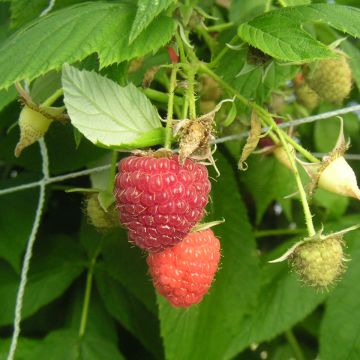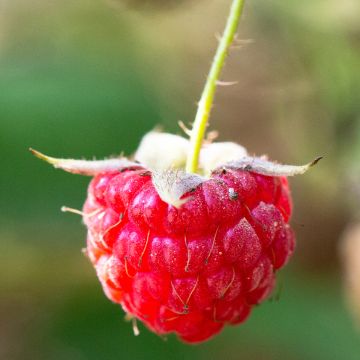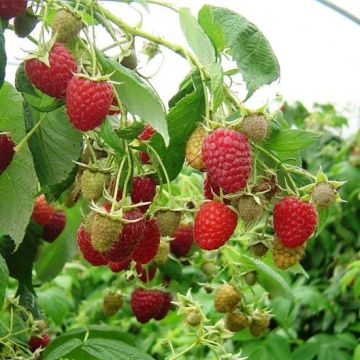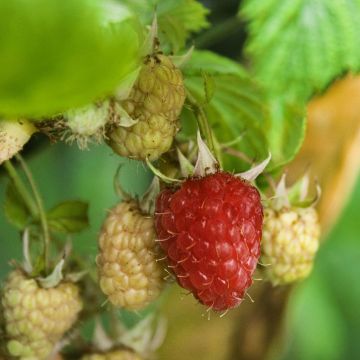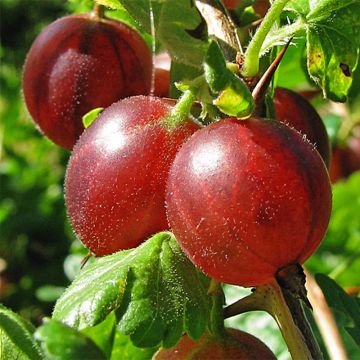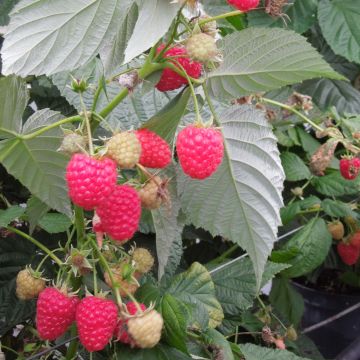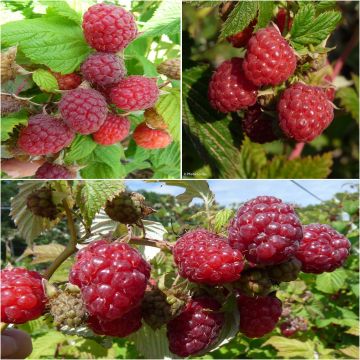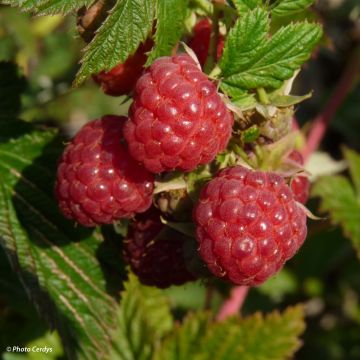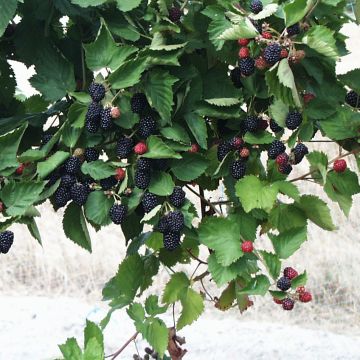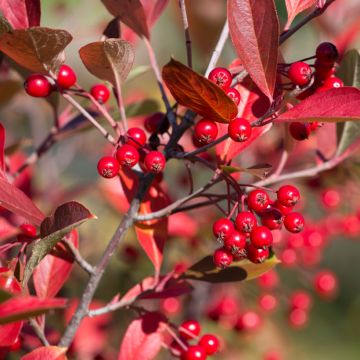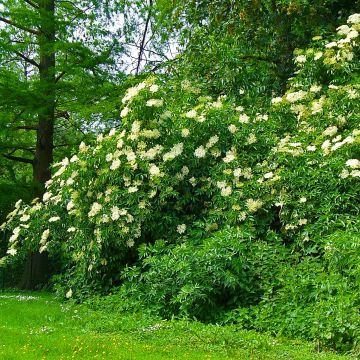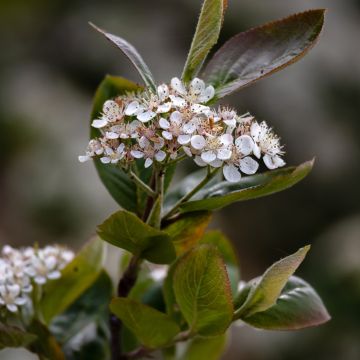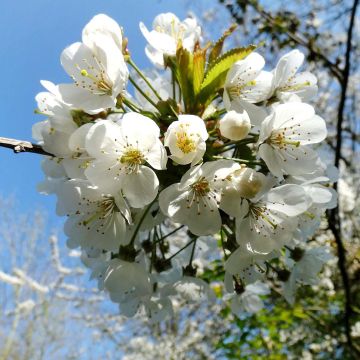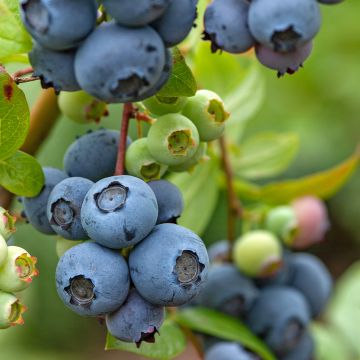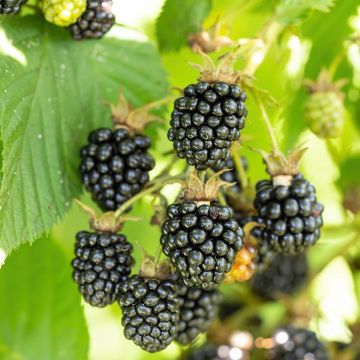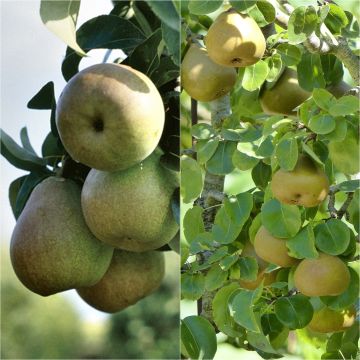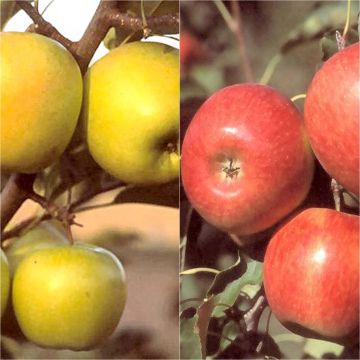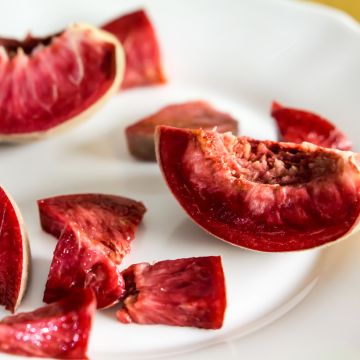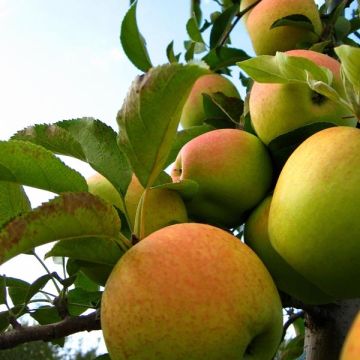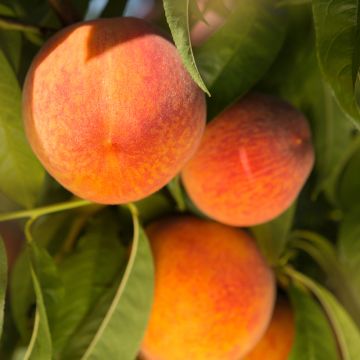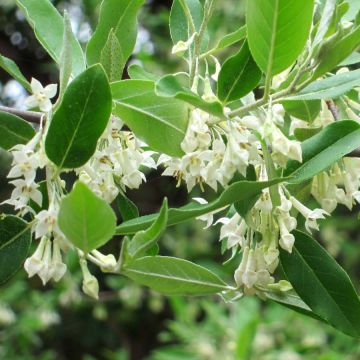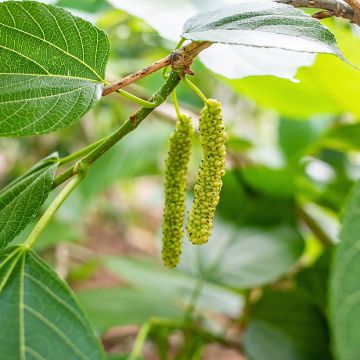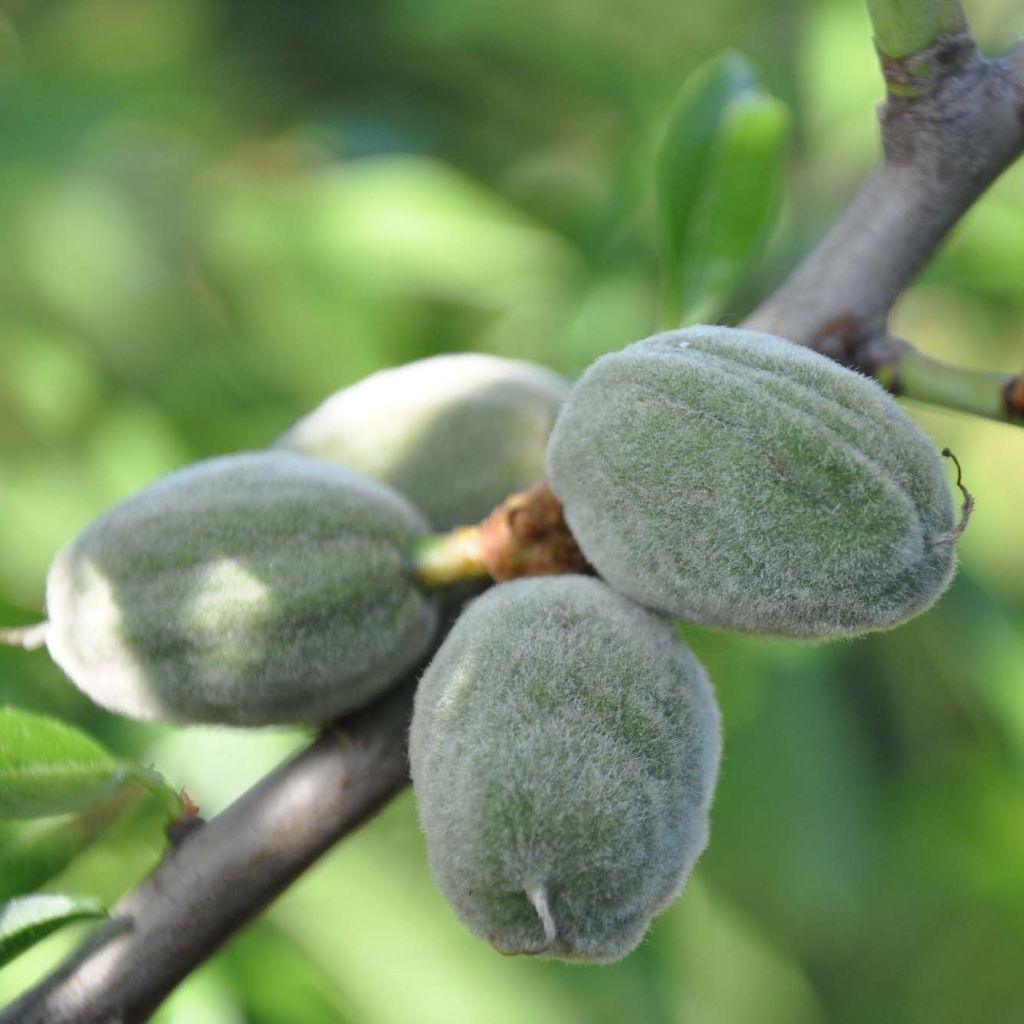

Prunus dulcis Supernova - Almond Tree
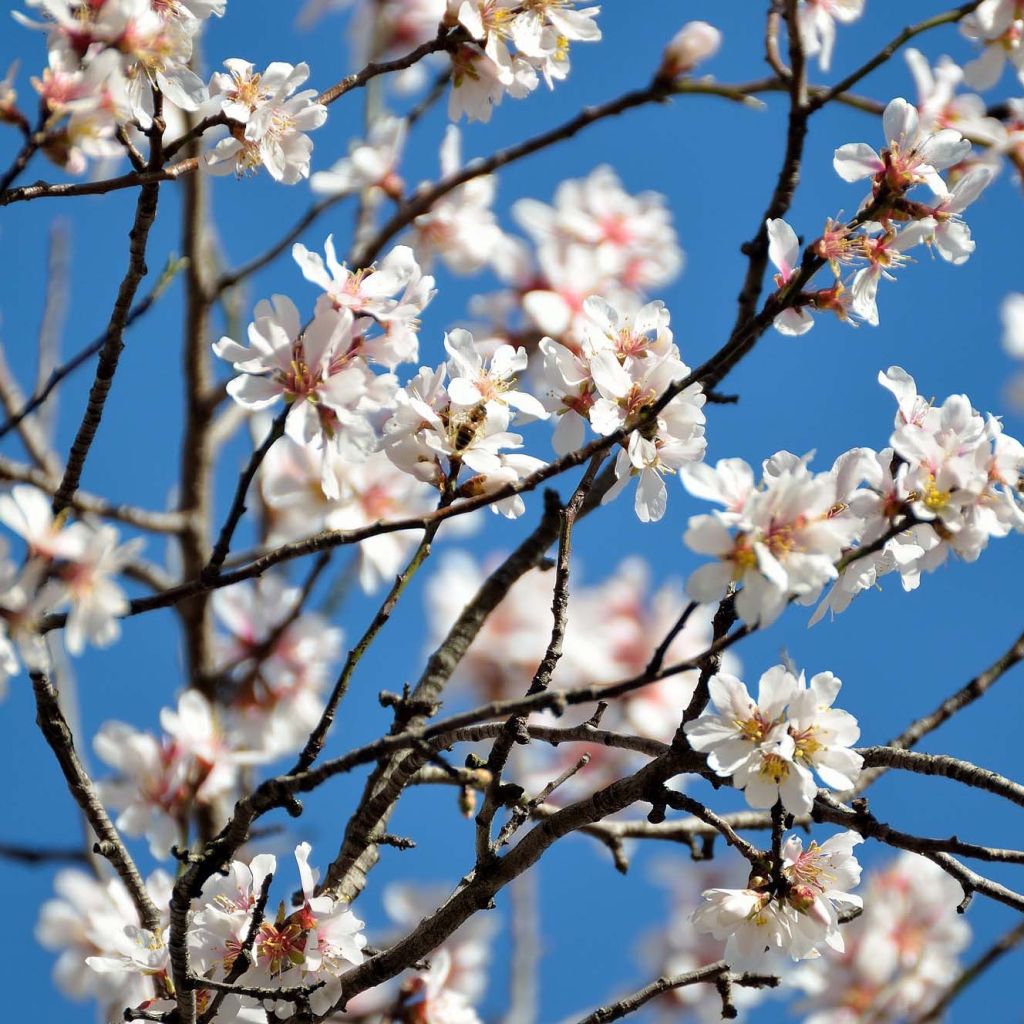

Prunus dulcis Supernova - Almond Tree
Prunus dulcis Supernova - Almond Tree
Prunus dulcis Supernova
Almond
Why not try an alternative variety in stock?
View all →This plant carries a 6 months recovery warranty
More information
We guarantee the quality of our plants for a full growing cycle, and will replace at our expense any plant that fails to recover under normal climatic and planting conditions.
Oversize package: home delivery by special carrier from €6.90 per order..
Express home delivery from €8.90.
Delivery to Corse prohibited: UE law prohibits the import of this plant from mainland France to Corse as part of the fight against Xylella fastidiosa. Please accept our sincere apologies.
More information
Description
The Almond tree or Prunus dulcis Supernova is a self-fertile European variety, meaning that it is not necessary to plant another almond tree nearby to obtain fruit. This selection is also characterized by a semi-late fruiting and good natural resistance to diseases. Its medium-sized fruits have a semi-hard shell that is fairly easy to crack to extract the almond. While appreciated for its delicate fruits, which are harvested in September, this Mediterranean fruit tree covered in white flowers is a beautiful addition to the garden in late winter. The almond tree, perfectly adapted to Mediterranean gardens, can thrive in poor, rocky, dry, and limestone soils.
The cultivated Almond tree (Prunus dulcis) belongs to the Rosaceae family, just like cherry and plum trees. It is derived from the Caucasian almond tree, known as Prunus fenzliana, a shrub native to Armenia, Turkey, and Iran. It has been cultivated for a long time in the Mediterranean region and for several decades in many arid regions. To obtain fruit, it is imperative that the blossoms do not freeze, which limits almond tree cultivation to climates governed by a Mediterranean-type climate with short winters: southern China, southwestern North America (California), South America (central Chile), South Africa, and Australia.
The Supernova almond tree is the result of the European program AGRIMED, which brought it to the market in 1987. It is a small tree with a spreading habit, a semi-open and branched crown, reaching a height of about 5 meters (16 feet) and a spread of 4 meters (13 feet) at maturity. This variety begins to produce almonds from a young age and can live for over a century. The tree has simple, thin, and pointed leaves, measuring up to 8 cm (3in) long and 2.5 cm (1in) wide, with dentate margins. They are medium green and slightly glossy on the upper side. The deciduous foliage turns yellow in autumn before falling. The flowering occurs in late February on bare branches. It is abundant and slightly fragrant. Each flower has 5 white petals and measures approximately 3.5 cm (1in) in diameter. This flowering produces high-quality nectar, highly sought after by bees at this time of year. It is followed by the formation of oblong fruits covered with a velvety green-gray skin, measuring up to 4 cm (2in) long. The skin dries and splits at the end of summer, revealing the hard shell that protects the edible almond. The harvest of Supernova almonds takes place in May-June for fresh almonds and in September for dried almonds.
During the first two years following its establishment, the almond tree is sensitive to frost, but afterwards, it is quite hardy, tolerating temperatures down to at least -12°C (10.4°F). However, cold weather makes its fruiting unpredictable as the flowers are very early and sensitive to frost. It is difficult to harvest almonds above the Lyon region. The almond tree thrives best in dry, rocky, and limestone soils, even in exposed locations. This tree dislikes soils that retain moisture to the point that it can rapidly deteriorate within a few days.
In plant anatomy, the term "almond" refers to the interior of the seed. The fruits of Prunus dulcis are called almonds because only this part is consumed. The pulp surrounding the stone is not edible. In addition to enjoying this delicious fruit, you can also appreciate its fragrant blossoms that herald the arrival of spring.
Report an error about the product description
Prunus dulcis Supernova - Almond Tree in pictures


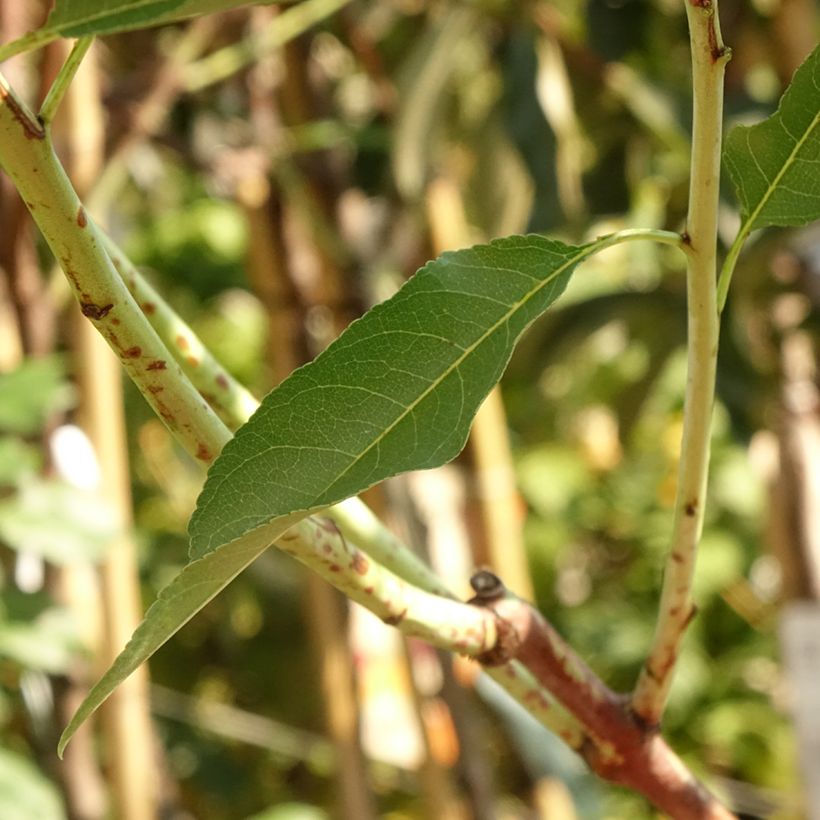



Plant habit
Fruit
Flowering
Foliage
Botanical data
Prunus
dulcis
Supernova
Rosaceae
Almond
Cultivar or hybrid
Other Fruit trees A to Z
Planting and care
Plant your Almond Supernova preferably in autumn, if it is a replacement, avoid planting it in the same place as a previous Almond tree. The almond tree requires well-drained soil, even stony soil, and it appreciates limestone soil. Its resistance to summer drought is excellent. However, clayey soils that retain moisture are very harmful to it, as they can lead to the development of a fungus at the root level and the rapid death of the tree.
Almond production requires the proximity of another variety of Prunus dulcis. Remember that fences do not prevent pollinators from moving from one garden to another. Pruning is limited to light thinning in winter to promote the formation of young shoots in spring. Remove dead wood and overlapping branches. You can optionally, in the first 3 or 4 years, be more severe and promote the formation of 4 or 5 main branches, giving it a goblet shape, traditional in fruit tree cultivation. You can harvest your almonds fresh or dry, according to your taste.
Planting period
Intended location
Care
This item has not been reviewed yet - be the first to leave a review about it.
Mediterranean fruit trees
Haven't found what you were looking for?
Hardiness is the lowest winter temperature a plant can endure without suffering serious damage or even dying. However, hardiness is affected by location (a sheltered area, such as a patio), protection (winter cover) and soil type (hardiness is improved by well-drained soil).

Photo Sharing Terms & Conditions
In order to encourage gardeners to interact and share their experiences, Promesse de fleurs offers various media enabling content to be uploaded onto its Site - in particular via the ‘Photo sharing’ module.
The User agrees to refrain from:
- Posting any content that is illegal, prejudicial, insulting, racist, inciteful to hatred, revisionist, contrary to public decency, that infringes on privacy or on the privacy rights of third parties, in particular the publicity rights of persons and goods, intellectual property rights, or the right to privacy.
- Submitting content on behalf of a third party;
- Impersonate the identity of a third party and/or publish any personal information about a third party;
In general, the User undertakes to refrain from any unethical behaviour.
All Content (in particular text, comments, files, images, photos, videos, creative works, etc.), which may be subject to property or intellectual property rights, image or other private rights, shall remain the property of the User, subject to the limited rights granted by the terms of the licence granted by Promesse de fleurs as stated below. Users are at liberty to publish or not to publish such Content on the Site, notably via the ‘Photo Sharing’ facility, and accept that this Content shall be made public and freely accessible, notably on the Internet.
Users further acknowledge, undertake to have ,and guarantee that they hold all necessary rights and permissions to publish such material on the Site, in particular with regard to the legislation in force pertaining to any privacy, property, intellectual property, image, or contractual rights, or rights of any other nature. By publishing such Content on the Site, Users acknowledge accepting full liability as publishers of the Content within the meaning of the law, and grant Promesse de fleurs, free of charge, an inclusive, worldwide licence for the said Content for the entire duration of its publication, including all reproduction, representation, up/downloading, displaying, performing, transmission, and storage rights.
Users also grant permission for their name to be linked to the Content and accept that this link may not always be made available.
By engaging in posting material, Users consent to their Content becoming automatically accessible on the Internet, in particular on other sites and/or blogs and/or web pages of the Promesse de fleurs site, including in particular social pages and the Promesse de fleurs catalogue.
Users may secure the removal of entrusted content free of charge by issuing a simple request via our contact form.
The flowering period indicated on our website applies to countries and regions located in USDA zone 8 (France, the United Kingdom, Ireland, the Netherlands, etc.)
It will vary according to where you live:
- In zones 9 to 10 (Italy, Spain, Greece, etc.), flowering will occur about 2 to 4 weeks earlier.
- In zones 6 to 7 (Germany, Poland, Slovenia, and lower mountainous regions), flowering will be delayed by 2 to 3 weeks.
- In zone 5 (Central Europe, Scandinavia), blooming will be delayed by 3 to 5 weeks.
In temperate climates, pruning of spring-flowering shrubs (forsythia, spireas, etc.) should be done just after flowering.
Pruning of summer-flowering shrubs (Indian Lilac, Perovskia, etc.) can be done in winter or spring.
In cold regions as well as with frost-sensitive plants, avoid pruning too early when severe frosts may still occur.
The planting period indicated on our website applies to countries and regions located in USDA zone 8 (France, United Kingdom, Ireland, Netherlands).
It will vary according to where you live:
- In Mediterranean zones (Marseille, Madrid, Milan, etc.), autumn and winter are the best planting periods.
- In continental zones (Strasbourg, Munich, Vienna, etc.), delay planting by 2 to 3 weeks in spring and bring it forward by 2 to 4 weeks in autumn.
- In mountainous regions (the Alps, Pyrenees, Carpathians, etc.), it is best to plant in late spring (May-June) or late summer (August-September).
The harvesting period indicated on our website applies to countries and regions in USDA zone 8 (France, England, Ireland, the Netherlands).
In colder areas (Scandinavia, Poland, Austria...) fruit and vegetable harvests are likely to be delayed by 3-4 weeks.
In warmer areas (Italy, Spain, Greece, etc.), harvesting will probably take place earlier, depending on weather conditions.
The sowing periods indicated on our website apply to countries and regions within USDA Zone 8 (France, UK, Ireland, Netherlands).
In colder areas (Scandinavia, Poland, Austria...), delay any outdoor sowing by 3-4 weeks, or sow under glass.
In warmer climes (Italy, Spain, Greece, etc.), bring outdoor sowing forward by a few weeks.

































